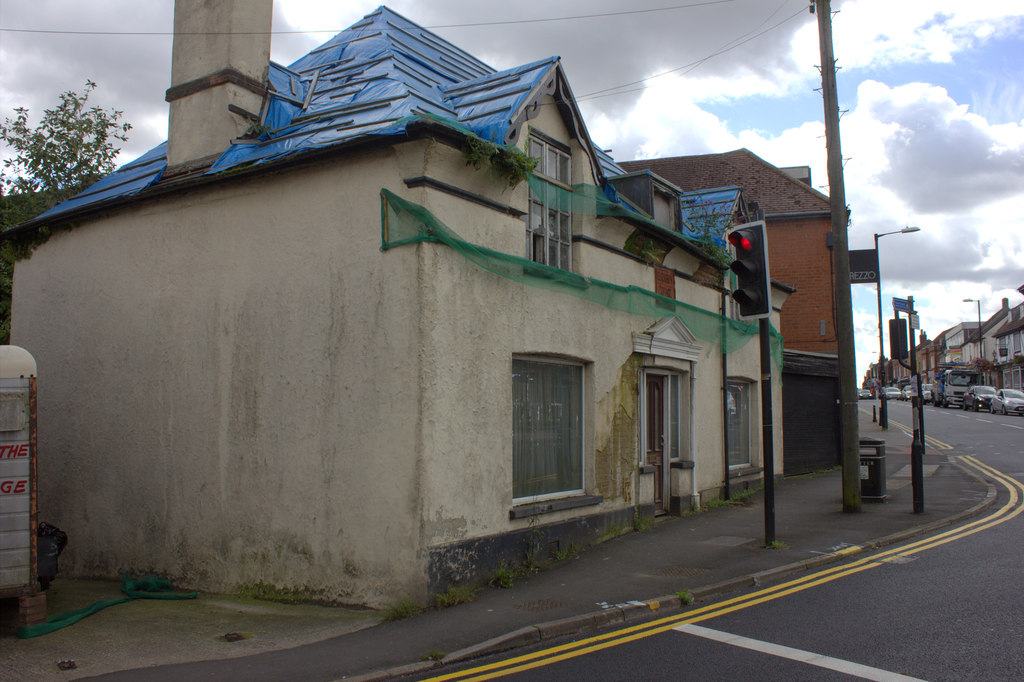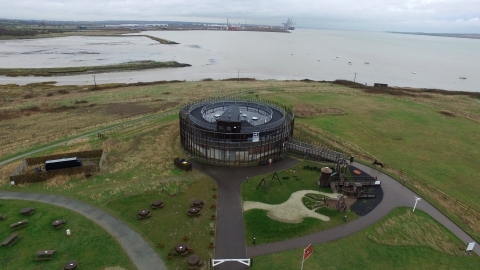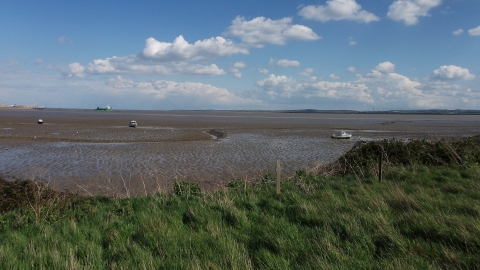Since 2009 there has been a special Armed Forces Day in Britain, with events held around the country to honour the men and women of the British armed forces past and present. While not an official national holiday it certainly seems to have become an annual event, observed nationwide usually in the last week of June (to coincide with the anniversary of the first ever Victoria Cross).
Chances are there's an event or three near you (if you're UK-based), be it a simple town centre march-past or a weekend of packed commemorations. Both of the above are occurring locally to me this weekend (28th/29th) but it is an earlier experience that will form the basis for this post today.
One of the biggest events -
THE biggest, in fact, according the promotional material - in Essex took place last weekend at my local showground, Barleylands in Billericay. I first became aware of the event as long ago as February, when the tickets began going on sale, and bought my entry there and then. (This didn't stop TicketWeb and/or the Royal Mail trying to thwart me by losing my ticket - cue much frantic 'phone-calling in the week leading up to it and the last-minute sending of a replacement e-Ticket... only to find they were being sold on the gate after all!). One thing in particular had ensured my attendance - the
Great War Display Team would be making an appearance (OK, so the Spitfire and Hurricane attracted me too, of course)!
 |
Three fields to the east of the car park were nothing to write
home about. The field to the south and the green marker were
the places to be. |
Come the day itself I availed myself of the free bus service and found myself at the Barleylands ground shortly after 11'o'clock. I really had no idea what to expect from the day, having never been to an Armed Forces Day event before, but I kept my hopes suppressed following
my previous less-than-positive experience a couple of years ago. As it turned out it was probably for the best, for the overall layout could best be described as your standard funfair with a bit of militaria tacked on. In one corner of a field there was a very interesting display of military vehicles - of which more momentarily. But then one had to walk through three fields of the usual merry-go-rounds, shooting galleries and ice cream vans, past a music stage empty and audience-less save for a fat man in jeans and a short-sleeved shirt who was belting out (admittedly in good voice) 1950s Rock'n'Roll numbers, just to get to the display area - which was encircled by innumerable burger vans (which at £4 for the cheapest burger-in-a-bun were a prime example of playing to a captive audience) and sunglasses sales tents.
I did a couple of circuits just to make sure I didn't miss anything, stopped for a cup of tea and my
own lunch and then headed back to the first field where I - very happily as it turned out - spent the rest of the day. Why happily? Well, that one field was worth the £10 price of admission in my book.
To start with, there was a Spitfire sitting bang in the middle of it! Although only a static replica (built over 20 years by a father and son team, using an old airframe and various parts) it was still beautiful to behold. It was possible to get quite close to it (for £2 one could look - but not sit - inside the cockpit) and having not been so near a Spit for quite some time I'd forgotten just how big an aircraft it is.

Around the perimeter of this field (and the small adjacent one) were the majority of the military vehicles (and armed forces', associations' and charities' stands). Two of the more interesting vehicles were a 1942 Cadillac staff car and 1950s Austin Champ jeep.
At one end was a group of Second World War re-enactors, representing the 2nd Battalion Essex Regiment and complete with Jeep and tents, while at the other end was the fascinating display of the
Great War Society. Despite having only enough room for two pitches their re-enactment was striking in its simplicity and gave a good idea of conditions for, in this case, an RFC officer and a cavalry veterinarian. The RFC johnnie was done up to the nines splendidly - complete with swagger stick, a beautiful pipe (with equally lovely-smelling tobacco) wind-up gramophone playing music hall numbers and a framed photo of
Lady Edith!
 |
| Who parked that German staff car there?! |
He recognised in me a fellow Chap (I think it might have been my cravat!) and we had a good long chat (he both in and out of character!) about the re-enactment scene, the centenary and my particular interest in the period and late 19th/early 20th century socio-cultural history in general. If you're reading this, Trevor, good show!
The cavalry vet also had a few handsome displays on show in the form of three pack mules, representing the equine aspect of the First World War. These three imposing beasts happily stood for being stroked and petted and were really quite beautiful animals. When you think of mules you might think of little donkeys and suchlike, but these three fellows were proper American-bred - such as the type that was used in the Great War to carry and pull all manner of things from provisions to artillery pieces - and stood an impressive 15-16 hands high! Very docile they were, though, and one in particular was only too pleased to pose.
 |
| Turn, aaand... smile for the camera! |
At around 1:30pm the Hurricane suddenly appeared, announcing its arrival by roaring overhead. Here I found myself in a fortunate position, quite literally, away from the crowds and main display area on the perimeter of the public area - and right next to the field over which the Hurri was flying! I was one of maybe only half a dozen people who found this sweet spot and it was like having your own personal airshow! Even with my ancient, worse-than-a-smartphone digital camera I was able to get some half-decent shots, although they don't show the wonderful proximity of this and later displays.
Suitably buoyed I hung around the same patch of grass sitting and enjoying the glorious June weather (and ruing not having brought a fold-up chair - the lack of seating except around the main display area being another nuisance) until 2:30, when looking to the eastern horizon this stirring sight met my gaze:
What happened for the next twenty minutes I won't forget in a hurry. The last time I saw First World War 'planes (replicas) in the air was nearly 20 years ago, at the nearby North Weald Aerodrome with my dad, when there were only two or three airworthy examples. Back then they flew so high and far away that it was really impossible to make them out clearly, let alone get a sense of speed and immediacy. Added to that they did a mock bombing raid that meant they were hundreds of yards the other side of the 'drome. Well, there were no such problems this time!
 |
| British and American SE5as |
 |
| Sopwith Triplane |
 |
| Junkers CL.1 |
 |
| Fokker and Sopwith Triplanes |
 |
| BE2c and Sopwith Triplane |
I literally didn't know where to look next. The Great War Display Team (for 'twas they) put on one hell of a show. They must have choreographed it with military precision but it all looked so "natural" that my heart was in my mouth more than once. It was likely the closest I'll ever get to seeing a proper dogfight. I must have taken over 100 photos in those twenty minutes and it was a struggle to pick out which ones to feature in this post. Considering I was just pointing and shooting with a fifteen year old 5x zoom camera I'm delighted how few of them I had to delete (I must admit to being a trifle embarrassed when I noticed nearby two young teenage girls both with proper professional-looking zoom lens cameras - oh for the day when I can afford a new box brownie!).
What with them and the GWS my existing passion for the Great War - and particularly the air war - was enhanced even more and I've now made it my mission to get to the original Stow Maries WWI aerodrome in mid-Essex, the restoration of which I wrote about in
an earlier blog post and at which the Great War Display Team sometimes appears. Perhaps an August birthday treat...?
The afternoon was topped off in style at 4'o'clock when the Spitfire turned up and proceeded to wheel and bank over our heads for the next 15 minutes. By that time I was aching, suntanned and a bit hungry so as the Spit disappeared to the west I hopped back on the bus and was home in time for tea, feeling well satisfied with the day and with renewed appreciation of the armed forces from all eras.
**Are you going to an Armed Forces Day event this weekend? Let me know in the comments below and I'll look forward to reading any subsequent posts!**
















.jpg?h=5793e458&itok=VI5hvy3L)








































